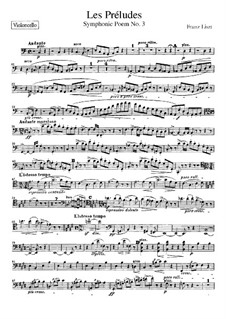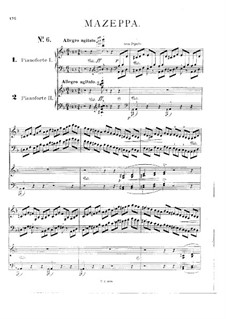


The real question was not so much whether symphonies could still be written, but whether the genre could continue to flourish and grow". While many composers continued to write symphonies during the 1820s and '30s, "there were a growing sense that these works were aesthetically far inferior to Beethoven's. The musicologist Mark Bonds suggests that in the second quarter of the 19th century, the future of the symphonic genre seemed uncertain. 27 (1828), based on the poem of that name by Lord Byron, and written twelve years before Liszt treated the same subject orchestrally. The first use of the German term Tondichtung (tone poem) appears to have been by Carl Loewe, applied not to an orchestral work but to his piece for piano solo, Mazeppa, Op. While the terms symphonic poem and tone poem have often been used interchangeably, some composers such as Richard Strauss and Jean Sibelius have preferred the latter term for their works. For example, The Swan of Tuonela (1895) is a tone poem from Jean Sibelius's Lemminkäinen Suite, and Vltava ( The Moldau) by Bedřich Smetana is part of the six-work cycle Má vlast.
#Franz lizt tone poems die ideak series
A symphonic poem may stand on its own (as do those of Richard Strauss), or it can be part of a series combined into a symphonic suite or cycle. However, the term symphonic poem is generally accepted to refer to orchestral works. Some piano and chamber works, such as Arnold Schoenberg's string sextet Verklärte Nacht, have similarities with symphonic poems in their overall intent and effect. The symphonic poem remained a popular composition form from the 1840s until the 1920s, when composers began to abandon the genre.

According to the musicologist Hugh Macdonald, the symphonic poem met three 19th-century aesthetic goals: it related music to outside sources it often combined or compressed multiple movements into a single principal section and it elevated instrumental program music to an aesthetic level that could be regarded as equivalent to, or higher than opera. This intention to inspire listeners was a direct consequence of Romanticism, which encouraged literary, pictorial and dramatic associations in music. While many symphonic poems may compare in size and scale to symphonic movements (or even reach the length of an entire symphony), they are unlike traditional classical symphonic movements, in that their music is intended to inspire listeners to imagine or consider scenes, images, specific ideas or moods, and not (necessarily) to focus on following traditional patterns of musical form such as sonata form. The Hungarian composer Franz Liszt first applied the term Symphonische Dichtung to his 13 works in this vein. The German term Tondichtung (tone poem) appears to have been first used by the composer Carl Loewe in 1828. For the American duo, see Poema (musical group).Ī symphonic poem or tone poem is a piece of orchestral music, usually in a single continuous movement, which illustrates or evokes the content of a poem, short story, novel, painting, landscape, or other (non-musical) source.


 0 kommentar(er)
0 kommentar(er)
